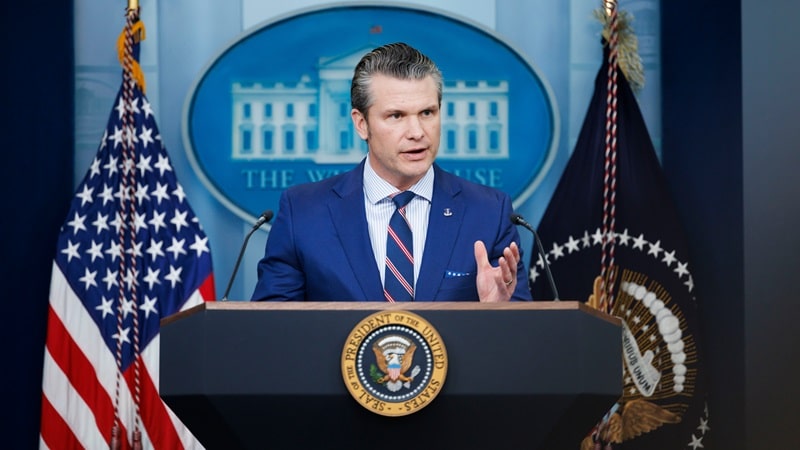
Secretary of Defense Pete Hegseth on Thursday directed the formation of a new task force that would lead the Defense Department’s efforts in developing and deploying counter-unmanned aerial systems (c-UAS) capabilities.
The task force – dubbed the Joint Interagency Task Force 401 (JIATF 401) – will replace the existing Joint Counter-small Unmanned Aircraft Systems Office (JCO). The task force will be formally stood up by Army Secretary Dan Driscoll and report directly to the Deputy Secretary of Defense Stephen Feinberg.
“We’re moving fast, cutting through bureaucracy, and empowering this task force with the utmost authority to outpace our adversaries,” Hegseth said in a video posted on X. “This is about restoring control of our skies.”
The task force is expected to have broad authority, including acquisition and procurement powers, and will be staffed jointly across military services. Although the secretary did not provide a timeline for when the task force will be fully operational, he stated that the Pentagon is working to accelerate the process by streamlining procedures and consolidating resources to stand up the organization.
According to a memo accompanying the announcement, Hegseth wrote that JIATF 401 will have an initial mandate of 36 months, with a sunset review at that time.
During that period, the task force will consolidate research, development, test and evaluation efforts and may approve up to $50 million in funding per initiative to accelerate the deployment of counter-drone technologies.
Hegseth has also directed Driscoll to deliver an implementation plan within 30 days outlining the resources, structure and authorities needed to support the task force. Hegseth also directed that all counter-small UAS research, development, test and evaluation efforts, except for military service-specific and U.S. Special Operations Command program-of-record activities, be consolidated under the new organization.
The memo also notes that the task force will work closely with the department’s chief technical and financial officers to secure flexible, multi-year funding beginning in fiscal year (FY) 2026. It will also incorporate liaisons from other federal agencies and consolidate programs under the Defense Innovation Unit’s Replicator 2 initiative.
Regarding future funding for the program, Hegseth wrote that the FY 2027 budget request is expected to include sufficient research, development, test and evaluation, procurement, and operation and maintenance funding to deliver solutions to warfighters more quickly and ensure balanced support for JIATF 401.
